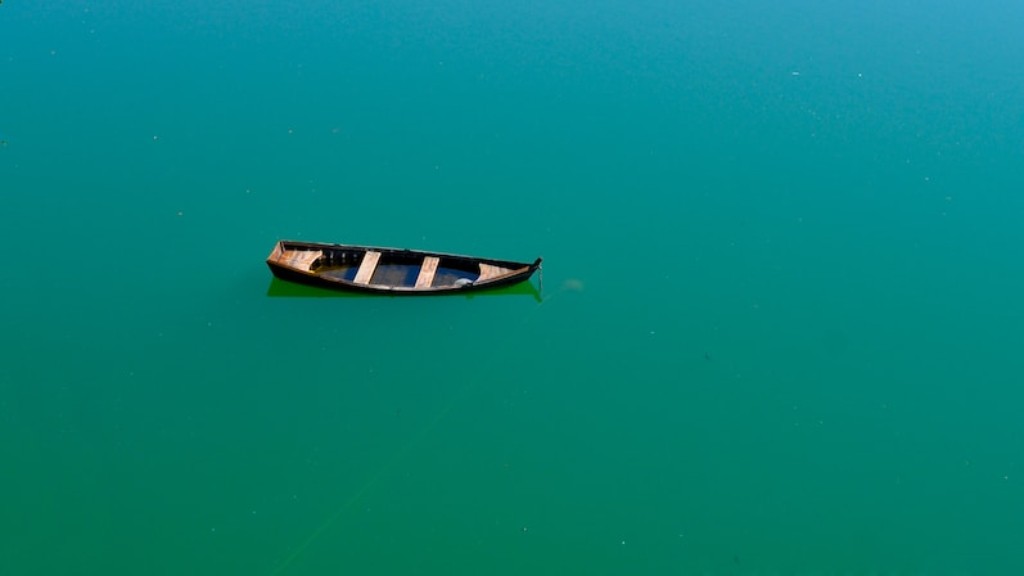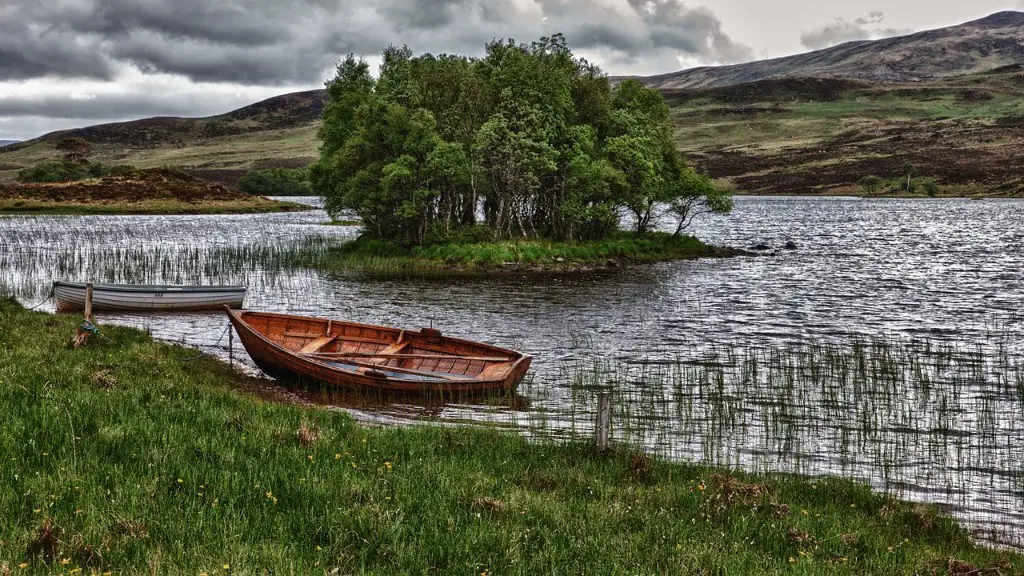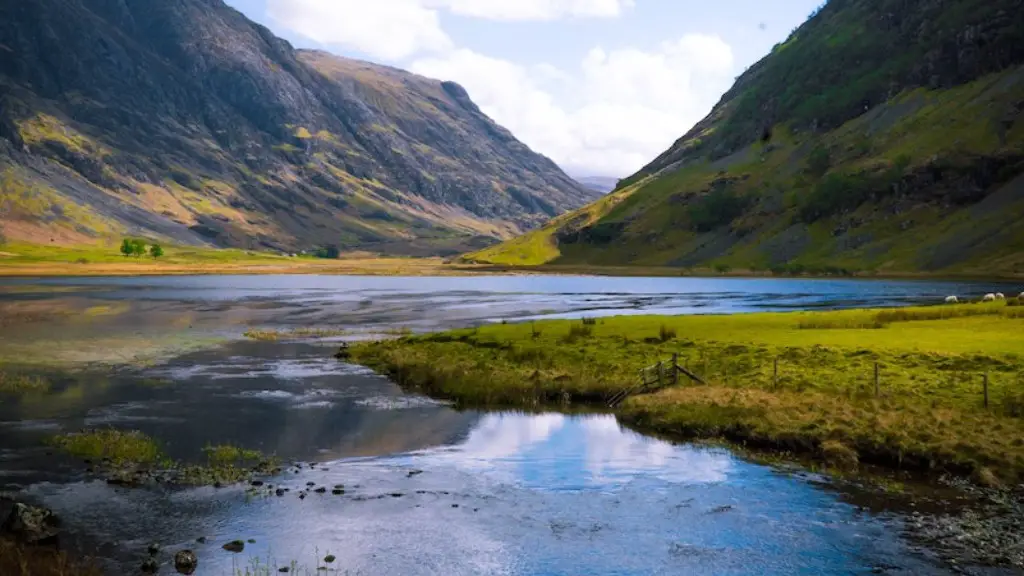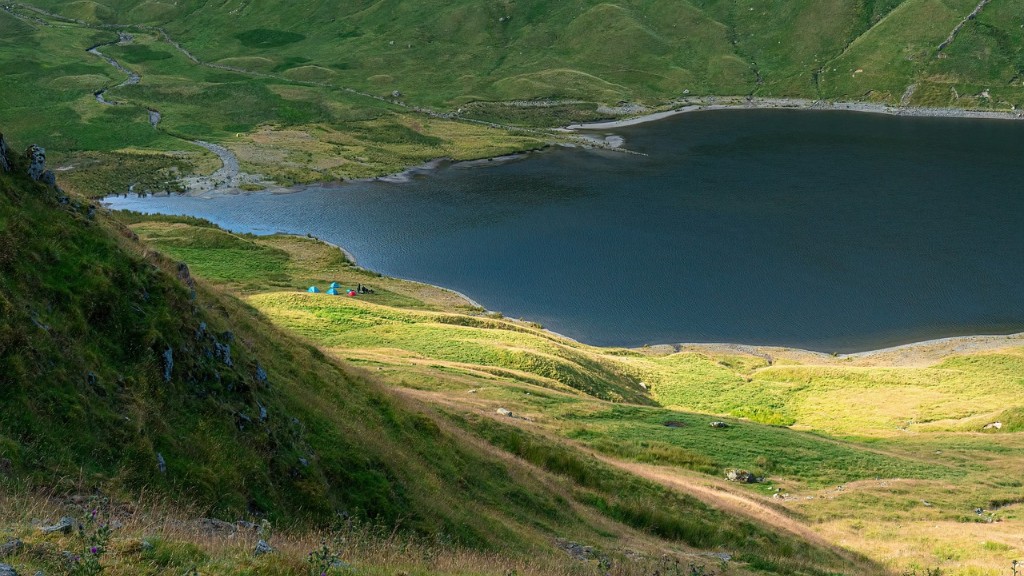What is Lake Huron?
Lake Huron is one of the Great Lakes of North America and is the second largest of them all by surface area. It is located in between the United States and Canada, and is shared by both countries. It is the third largest fresh water lake in the world, covering an area of 23,000 square miles, and accounts for one-fifth of the total surface of the Great Lakes. The border between the US and Canada roughly follows the length of the lake, from the northeastern-most portion near Thunder Bay, Ontario, to the southeastern-most end near Port Huron, Michigan. The lake is named for the Huron people, who are the original inhabitants of the area where Lake Huron is located.
How Deep is Lake Huron?
Lake Huron is known for its incredible depth, reaching a maximum depth of 750 feet. Its average depth is much shallower, however, at 195 feet. This is still quite deep for a lake, and it is actually the second deepest of the Great Lakes and also one of the deepest lakes in the entire world. Despite its great depth, however, Lake Huron is generally considered to be the warmest of all the Great Lakes. This is because it is both the shallowest and the longest, receiving more warming sunlight than its counterparts.
The deepest point of Lake Huron is located near the southeastern end, near two small islands named Caribou and Reaume. At this point, the lake bed has a depth of 750 feet, making it the second deepest point in the Great Lakes after Lake Superior, which is nearly a thousand feet deep. Lake Huron is also quite unique for having a large number of natural islands in it, especially compared to its other counterparts. In total, there are over 30,000 islands scattered in the lake, most of them quite small but many of them being large enough for human habitation.
Formation of Lake Huron
Lake Huron was formed as part of the retreat of the Pleistocene ice sheet about 11,000 years ago. As the glaciers receded, the Great Lakes basin was left behind and filled with meltwater from the melting ice sheet. Over time, the waters of this basin became what is now Lake Huron, along with its counterparts Lakes Ontario, Erie, and Superior. Since then, the shape and size of Lake Huron as well as its general characteristics have been determined largely by the geography of the area, along with its history and climate.
Current State of Lake Huron
Today, Lake Huron is home to a number of unique species, many of which are endangered or threatened. In addition to being an important habitat for a variety of plants and animals, the lake also provides economic benefits to the countries and states bordering it, as well as its many inland communities. Tourism, fishing, and shipping are just a few of the resources provided to the region. Despite its great depth, however, Lake Huron is under constant threat from the effects of human use and pollution.
Humans are well aware of the importance of this vital body of water, and have taken many steps to help protect its ecosystems and preserve it for future generations. Through the Clean Water Act, a number of protections have been put in place to keep pollutants out of the lake and to keep its water quality high. This has allowed for the lake to remain relatively healthy, even with the current levels of human activity in the area.
Threats to Lake Huron
Despite the efforts of governments and conservation groups, the health of Lake Huron is still under threat. Non-native species, climate change, and water pollution are all currently having a major effect on the lake’s ecosystems. Over-fishing and unsustainable practices continue to take a toll on the native species of Lake Huron, and the effects of climate change are already making themselves known in the form of warmer temperatures and rising water levels. Finally, various forms of pollution, whether they come from agricultural runoff, industrial waste, or household wastewater, are contaminating the lake’s waters and threatening its health.
As a result, conservation efforts are growing in the region, with more and more people recognizing the importance of Lake Huron, both to the nearby communities and to the rest of the world. Local initiatives are preserving the lake’s habitats, while research and collaboration are being used to understand, monitor, and protect its delicate environment.
Preservation Efforts
A number of organizations have taken up the cause of preserving and protecting Lake Huron, including government entities and environmental groups. In the United States, for example, the Great Lakes Commission works to promote the conservation and restoration of the Great Lakes, while the International Joint Commission takes a bilateral approach to protecting them. In Canada, the Ontario Ministry of Environment is responsible for monitoring and protecting Lake Huron and its watershed.
At the same time, a number of citizen initiatives have been formed to support the preservation of the lake and its watershed. These initiatives are often focused on specific issues, such as reducing pollution or raising awareness about the importance of the lake. Together, all of these efforts are helping to protect Lake Huron and ensure that it remains healthy and vibrant for generations to come.
Effects of Pollution
Pollution has had a devastating effect on Lake Huron, as it has on all the Great Lakes. Chemicals, heavy metals, and other pollutants all find their way into the lake and can have a negative impact on its ecosystems. In addition to being harmful to the native species of the lake, they also pose a risk to human health, as the pollutants can make their way into the drinking water, leading to illness or worse. For this reason, efforts are being made to reduce pollution levels and to monitor the water for any signs of contamination.
These efforts include improving wastewater treatment systems, regulating agricultural runoff, and reducing the amount of industrial discharge that is released into the lake. However, due to the sheer size of the lake and its watershed, it can be difficult for governments and conservation groups to keep an eye on such a vast area. For this reason, citizens must play an active role in helping to monitor and protect the lake and its environment in order to ensure its long-term health and viability.
Conclusion
The incredible depth and size of Lake Huron has made it one of the Great Lakes and an important source of recreation, resources, and tourism for both countries that it borders. Despite this, its current health is under threat from a variety of factors, including climate change, water pollution, and overfishing. Governments and conservation groups need to continue their efforts to reduce pollutants and protect the lake, while citizens must also play an active role in helping to preserve its unique environment for future generations.



